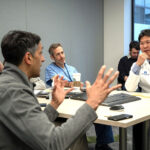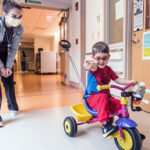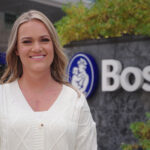Ted Williams, chocolate milkshakes, and a pioneering heart team: What Bruce remembers about his heart surgery 65 years later
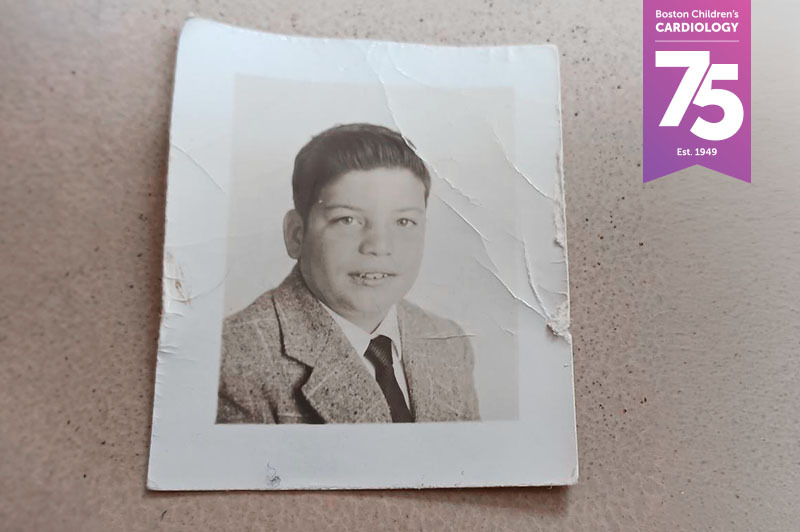
Bruce Chansky was the star of his neighborhood after he had heart surgery at Boston Children’s.
It was 1959, a time when a child having heart surgery wasn’t common — it was newsworthy. Eleven-year-old Bruce was featured in his hometown newspaper, which only furthered his celebrity in Beverly, Massachusetts. Friends, neighbors, and strangers all wanted to talk to him about getting a “new” heart. He felt like royalty. Who else but royalty has a private audience with baseball icon Ted Williams in the Red Sox dugout at Fenway Park?
But that wasn’t what Bruce really wanted. He wanted to live a long, healthy life. That type of life doesn’t make news, but now, more than six decades after his operation, Bruce is happy with the trade-off. “Before surgery, my life expectancy was my 20s,” he recalls.
Bruce feels younger than his current age, 76. He regularly exercises and plays golf, and he has a thousand stories to tell — like the time he took his autographed Ted Williams baseball to a neighborhood pickup game. You can guess what happened to the ball (he lost it), but you might not guess what else happened to Bruce along the way. To celebrate the 75th anniversary of Boston Children’s Department of Cardiology, he can tell you, in his words, how the hospital’s pioneering care got him to where he is today.
No matter what it took, baseball was the goal
Doctors said I was a “blue baby.” I had right bundle branch block (a delay or blockage in the pathway where the heartbeat’s electrical impulses travel). My doctors kept an eye on me. I had a catheterization when I was 7. That’s when they learned I had an atrial septal defect (ASD) — a hole in the heart wall that separates the upper left and right heart chambers.
They had to get me stronger before surgery. I was on a regimen of chocolate milkshakes with raw eggs. You’d see these eyes on the top of the milkshake — you know, the eggs. That was the worst, but I had to do it because I loved baseball. When I played, I would lose my breath. So I had to pace myself and get stronger for surgery so I could play baseball without losing my breath.
Heart care by some of the field’s pioneers
The great Boston Children’s surgeon Dr. Robert Gross did my operation. (In 1938, Dr. Gross performed the first ever surgical repair of a congenital heart defect that, until then, had often caused early death.) When I got anesthesia, I got so disoriented that my hand knocked the whole thing on the floor. The tank and everything went crashing. They put the mask back on, and I saw stars and Saturn with its rings.
When I woke up, the first thing I said was, “How are the Red Sox doing?” I recovered in what was called a pump room. My bed was on ice and every few hours they’d drain the melted ice and put down new ice. The room also had an oxygen tent. I’d go inside and breathe fresh air.
Make an appointment
Request an appointment or seek a second opinion at the Benderson Family Heart Center.
Dr. Alexander Nadas, who started the cardiology department, and Dr. Alla Gregory Zaver, who later became the first Australian fellow of the American College of Physicians, were my cardiologists. I was in the best hands. I went home after a few weeks. I don’t remember how many times I went back to Boston Children’s for follow-up visits, but they always treated me well.
Feeling fit and forever young
Later in my life, I developed atrial fibrillation (AFib), an arrhythmia. It’s under control. I take a statin — a medication to lower my cholesterol — and my cholesterol and heart rate numbers are what you’d see for someone who would be in their 40s. My doctors have been telling me I’ll live to 120 because I have no stress on my heart. Whenever I have an echocardiogram, they look for signs of the ASD and there is no sign of it. That is remarkable. What a great job that Dr. Gross did.
A chance meeting with a heart surgeon
I never got to meet Dr. Gross, but years later I was in the airport at Fort Meyers, Florida, and I hear this gentleman with a Boston accent talking. We got to chatting, and he said he was a surgeon at Boston Children’s. I said, “You got to be kidding! I had open heart surgery at Boston Children’s by Dr. Gross in 1959.” He said, “I was there.” And that’s how I met Dr. Hardy Hendren, who trained under Dr. Gross. We almost missed our planes because we talked so long. What a thrill.
Giving back to the heart community
After my surgery, I was a poster child for the American Heart Association (AHA) on the North Shore of Massachusetts. After a career in television and the concert business (rubbing elbows with Tony Bennett, The Temptations, and Johnny Cash), I worked for the AHA, eventually becoming the executive director in Central Massachusetts. Life came full circle there.
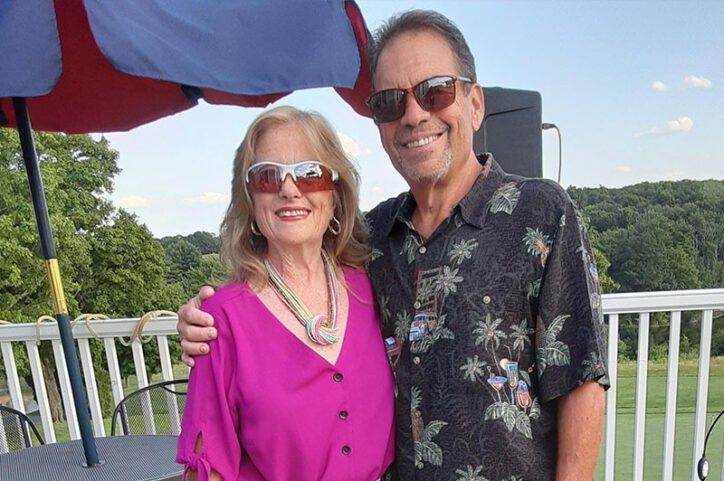
Appreciative of life and always staying positive
I live in Worcester now with my wife, LyndaRose. I have two sons, four grandchildren, and four great-grandchildren. They are all reminders of how far I’ve come and why the number-one thing is having your mind focused…Even when things aren’t going right, you got to look back and say, “My, God. Look where you come from. You shouldn’t even be here…”
If I didn’t have Boston Children’s and Dr. Gross, I wouldn’t be here. They are a big part of my life and why I was able to go forward.
Learn more about the Department of Cardiology.
Related Posts :
-

Healing the heart, mind, and spirit
For most of her life, Siena Tancredi worried about her heart beating too fast. She has long QT ...
-

Constant improvements make the Ross procedure a safe aortic valve replacement option
Cardiac surgeons understand that innovation isn’t always about invention. Improving something can be just as transformative. So it shouldn’...
-

A 'super' new heart surgery for a super kid
When you’re the first person in the world to undergo a new type of heart surgery, you don’t ...
-

Twenty years after a groundbreaking biventricular repair, Faith gives back by helping children with CHD
Faith Brackett doesn’t remember every detail of the time she was among the first children to have a new ...



